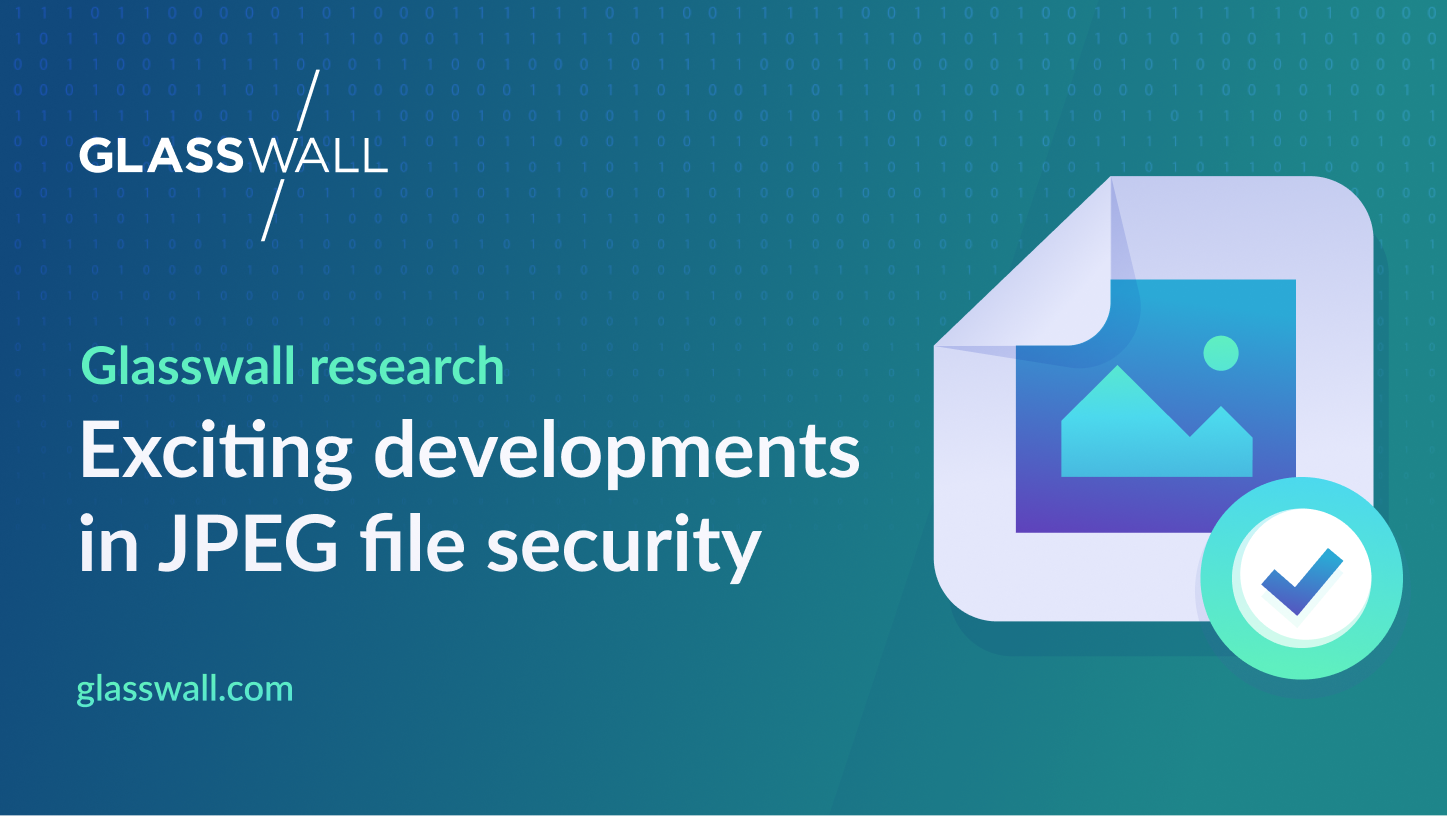At Glasswall, we are constantly innovating to not only enhance security but also improve usability. Recently, our team has been deeply involved in researching JPEG file security, specifically exploring the possibility of allowing metadata in APP0 and APP1 segments.
JPEG files, part of the broader family of digital image formats, utilize a method of lossy compression for digital images. Within a JPEG file, several segments define how the image should be interpreted and displayed. Among these, the APP0 and APP1 segments are noteworthy for their roles in image metadata and compatibility.
What are APP0 and APP1 segments?
The APP0 (Application 0) segment is primarily used for ensuring compatibility across different JPEG decoders. It contains information that identifies the file as a JPEG image and can also include additional details that help in the proper display of the image. It often includes the JFIF (JPEG File Interchange Format) marker, which indicates that the file conforms to the JFIF standard, a widely accepted convention for JPEG images. The APP1 segment is used to store extended metadata about the JPEG image. One of the most common uses of the APP1 segment is to store EXIF (Exchangeable Image File Format) data. EXIF data can include a wealth of information about the image, such as camera settings (shutter speed, aperture, ISO), the time and date the photo was taken, and potentially GPS data indicating where the photo was captured.
Glasswall’s novel approach
Previously, Glasswall’s technology removed the APP0 and APP1 segments by default, but a new mode maintains a strong security posture while enabling the preservation of valuable image information in sanitized files - a significant advancement in usability without compromising security.
Upon thorough review of our research findings, it is evident that while exploits in the JFIF and EXIF segments of JPEG files are rare, the content of EXIF metadata fields presents a potential risk as a vector for malicious payloads. To address this, we have developed methods for mitigating risks, including content size limitation, field count restriction, and content format checks, ensuring a robust security framework.
Our security team's diligent approach has yielded tangible results, displaying examples of injected script code and executable payloads within metadata fields. Crucially we have ascertained how to defeat such techniques. These discoveries emphasize the critical need for proactive measures to defend against emerging threats in the digital landscape.
We are thrilled to announce that the insights gained from our research will soon be integrated into Glasswall products. By incorporating these advancements, we are empowering users with enhanced defenses against evolving cyber threats while maintaining the integrity of their data.
At Glasswall, our commitment to both innovation and security drives our endeavors. Stay tuned for further updates as we implement these groundbreaking improvements, ushering in a new era of JPEG file security that prioritizes both usability and protection. Together, we are shaping a safer digital future—one byte at a time.





.png)









